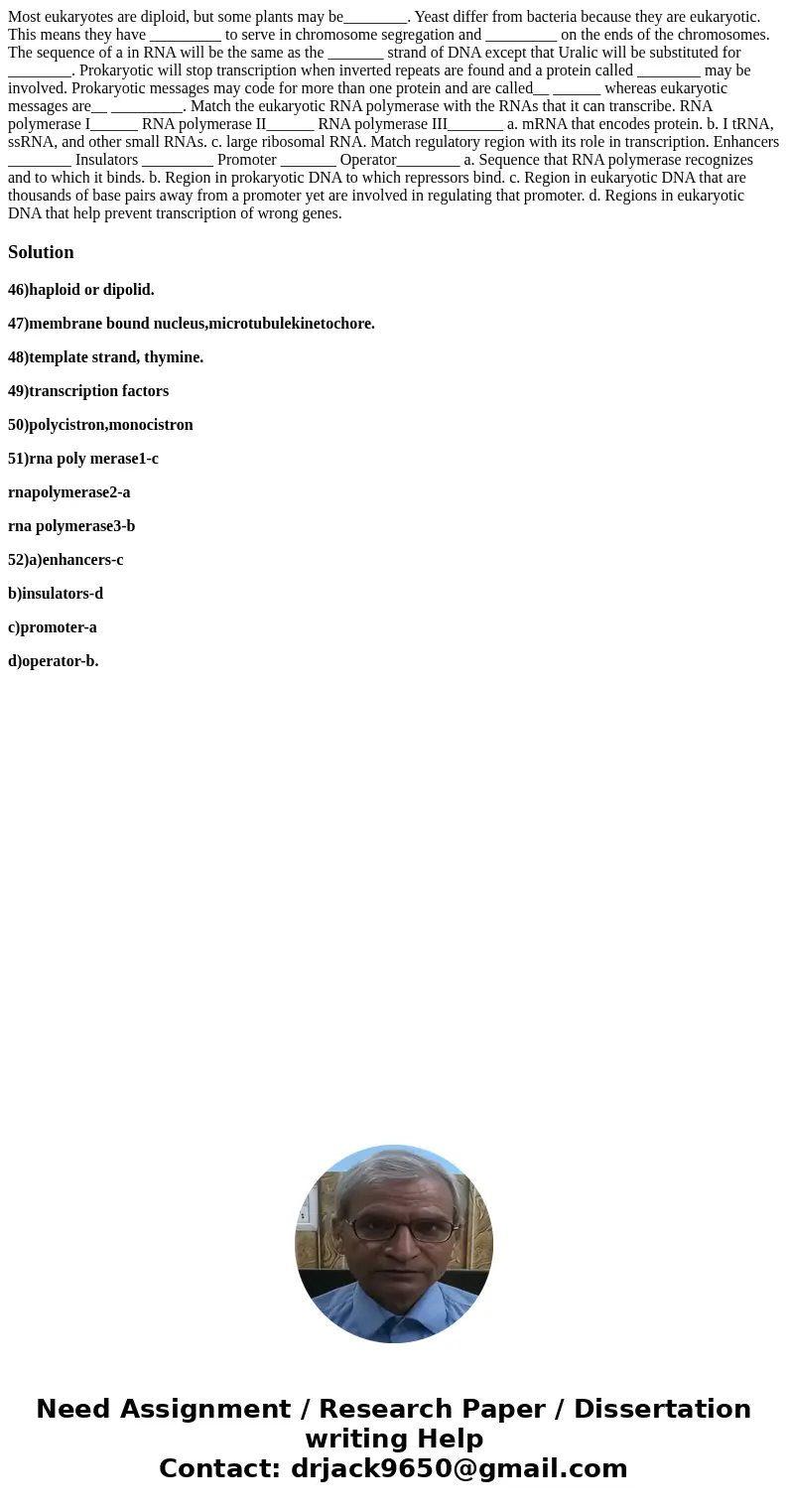Most eukaryotes are diploid but some plants may be Yeast dif
Most eukaryotes are diploid, but some plants may be________. Yeast differ from bacteria because they are eukaryotic. This means they have _________ to serve in chromosome segregation and _________ on the ends of the chromosomes. The sequence of a in RNA will be the same as the _______ strand of DNA except that Uralic will be substituted for ________. Prokaryotic will stop transcription when inverted repeats are found and a protein called ________ may be involved. Prokaryotic messages may code for more than one protein and are called__ ______ whereas eukaryotic messages are__ _________. Match the eukaryotic RNA polymerase with the RNAs that it can transcribe. RNA polymerase I______ RNA polymerase II______ RNA polymerase III_______ a. mRNA that encodes protein. b. I tRNA, ssRNA, and other small RNAs. c. large ribosomal RNA. Match regulatory region with its role in transcription. Enhancers ________ Insulators _________ Promoter _______ Operator________ a. Sequence that RNA polymerase recognizes and to which it binds. b. Region in prokaryotic DNA to which repressors bind. c. Region in eukaryotic DNA that are thousands of base pairs away from a promoter yet are involved in regulating that promoter. d. Regions in eukaryotic DNA that help prevent transcription of wrong genes.
Solution
46)haploid or dipolid.
47)membrane bound nucleus,microtubulekinetochore.
48)template strand, thymine.
49)transcription factors
50)polycistron,monocistron
51)rna poly merase1-c
rnapolymerase2-a
rna polymerase3-b
52)a)enhancers-c
b)insulators-d
c)promoter-a
d)operator-b.

 Homework Sourse
Homework Sourse